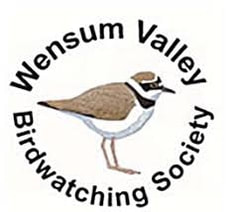|
Speaker: Allan Hale Reporter: Sue Gale It has become a tradition at WVBS that the AGM means a talk from Allan Hale, telling us about one of his exotic trips abroad. Indeed, I don’t know how we would manage the AGM without him, as he also acts as our returning officer. So he was in charge during the business of the meeting, at which the committee was re-elected with the addition of a new Minutes Secretary, Cath R. And still in charge immediately afterwards as he told us not to mute ourselves so that we would be free to interrupt or even heckle whenever we wished. I’m not sure we made much use of that privilege but clearly Allan enjoys the interaction with members during his presentations and didn’t want to lose that. This year we were treated to an account of a trip to South America entitled Chile – Top to Bottom. Allan really does cover some miles on these trips, and as Chile is 2600 miles long it’s no surprise that he did so on this trip. As always his photos were a pleasure to see, and he started with two common
species, the Rufous-collared Sparrow, northern sub-species and a Shiny Cowbird, which is found all over South America. The latter is a brood parasite and its main victim is the Sparrow! As usual Allan had found a good local guide, and after a quick look at the Santiago area they flew North to Arica near the border with Peru. Here they encountered the Grey Gull, which nests in the desert. Arica is a port, not only for Northern Chile but also for land-locked Bolivia so it is pretty busy. Nonetheless it had Sea Lions in the harbour and Peruvian Pelicans by the dock. At a nearby busy beach were Black Skimmers and Elegant Terns as well as some species we see over here at times like the American Golden Plover. Moving on through the Atacama Desert there was absolutely nothing until they visited the Hummingbird Garden – which did house Oasis Hummingbird nests, White-crested Elania and nearby Burrowing Owls. Climbing over 4000m high into the Andes, to Chungara, they were advised to avoid alcohol because of the altitude, although it didn’t seem to apply to the locals... Here were Rheas, Vicunas and Andean Hare, all surviving in a very barren landscape. There were Hooded Siskins all around and a Sandpiper Plover that took a lot of finding. The high level soda lakes had Chilean and Andean Flamingos, Andean Coots and Andean Gulls, but exploring had to be conducted at a snail’s pace because of the lack of air! Peruvian Pygmy Owl and Vermillion Flycatcher were both called in by playing a tape. Back at Santiago a highlight was a pelagic trip from Quintero (the port). Travelling about 20 miles out from the coast brought Sooty Shearwaters, Black-browed Albatross and Grey Phalaropes. Surprising how many of these pelagic species are seen all over the world. The Inca Terns and Peruvian Pelicans didn’t fall into that category however, and as always the images were spectacular. Wonderful to see many species of Albatross too. Further South they encountered Humbolt Penguins and Sea Otters, and then Black-faced Ibis and Southern Crested Caracara. Allan was delighted to have encountered an Andean Condor in a crater in the mountains. It would have been awful to travel all that way and not see this iconic species. At Punta Arenas they found another Rhea species – Darwin’s Rhea and a long-tailed Meadow Lark which has a red breast. Magellanic Penguins were charismatic as always. From Punta Arenas to Tierra del Fuego was a two and a half hour ferry giving views of more terns and albatrosses. The island itself was pretty flat and they found several types of Plover plus 3 different geese and Guanacos (similar to Vicunas). They took a shorter ferry back to the mainland – only 15 minutes this time, where they saw the lovely Rufous-chested Dotterel and two sorts of Steamer Duck, one of which is flightless. Back at Santiago on the way home they had one more day out, seeing Chilean Mocking Bird and Black-chested Buzzard among others. As always with these presentations that are lovely to look at it is not possible to list all the birds and other species seen, but they certainly are wonderful to see. Many thanks to Allan for his usual excellent presentation.
0 Comments
Leave a Reply. |
Please feel free to read through our reports from our monthly indoor / online meetings. Archives
May 2024
Categories |

 RSS Feed
RSS Feed
